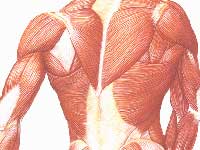Just In
- 3 hrs ago

- 5 hrs ago

- 6 hrs ago

- 6 hrs ago

Don't Miss
- Technology
 HMD Branded First Set of Android Smartphones Are Here!
HMD Branded First Set of Android Smartphones Are Here! - Education
 MP Board Result 2024: Toppers List of Class 10th and 12th is here
MP Board Result 2024: Toppers List of Class 10th and 12th is here - Movies
 Mankatha Re-Release Woes: Ajith-Venkat Prabhu's Action Thriller Faces Issues; To Hit Screens On THIS Date
Mankatha Re-Release Woes: Ajith-Venkat Prabhu's Action Thriller Faces Issues; To Hit Screens On THIS Date - News
 Indian MBBS Student, Dasari Chandu, Dies In Kyrgyzstan After Waterfall Mishap
Indian MBBS Student, Dasari Chandu, Dies In Kyrgyzstan After Waterfall Mishap - Finance
 Vodafone Idea FPO: Shares To Debut Tomorrow; GMP Hints Premium Listing; Shares Slump 9%
Vodafone Idea FPO: Shares To Debut Tomorrow; GMP Hints Premium Listing; Shares Slump 9% - Sports
 'They don't want to play Bazball in England, they want to play IPL in India': Virender Sehwag silences Vaughan
'They don't want to play Bazball in England, they want to play IPL in India': Virender Sehwag silences Vaughan - Automobiles
 2024 Kia Carens Secures 3-Star Adult & 5-Star Child Safety Ratings – Detailed Look
2024 Kia Carens Secures 3-Star Adult & 5-Star Child Safety Ratings – Detailed Look - Travel
 Mumbai Opens BMC Headquarters For Exclusive Heritage Tour
Mumbai Opens BMC Headquarters For Exclusive Heritage Tour
CO May Cut Skeletal Muscle Injuries

Carbon monoxide may be known for long term health hazards, but a new study has revealed that inhaling it can significantly reduce skeletal muscle injury following limb peripheral vascular disease (ischemia).
Ischemia is a condition where blood flow is interrupted and can be compounded by reperfusion, when damage is caused after the blood supply returns to the tissue. When this occurs, there can be limb loss or death.
A team from Massachusetts General Hospital in Boston reviewed the results the experiments conducted on 23 mice from two groups, in which 10 were given CO and 13 were not,
“Mice that inhaled a low dose CO after an onset of ischemia resulted in decreased markers of inflammation locally in the injured skeletal muscle and systemically in the blood, and had increased energy levels after ischemia/reperfusion (I/R) mediated injury within the injured limb," said Dr Rajendra Patel, clinical and research fellow in the department of vascular surgery.
“All of these factors may allow for a faster and more complete recovery in humans, and even decrease limb loss or death," he added.
For the study, scientists created a unilateral hind limb I/R using an orthodontic rubber band. It was then applied to 23 mouse limbs for 1.5 hours.
Immediately after application of the band, during ischemia and the initial six hours of reperfusion, 10 mice were put in sealed chambers equilibrated with gases composed of 250 ppm CO mixed with room air. The 13 other mice were put in a chamber of air alone.
The mice were all mice were placed in room air at ambient temperature after six hours reperfusion and sacrificed after 24 hours
The findings revealed that CO treated mice had less skeletal muscle injury compared to room air treated mice (a mean 16.8 percent vs. 29.2 percent).
This group also had higher tissue ATP levels when compared to the control group (mean 21.9 vs. 8.0 contralateral) and serum and muscle KC levels were markedly reduced in the CO group when compared to the control group.
There was no difference in mean blood pressure and heart rate in both groups of mice when measured at baseline, 6 and 24 hours reperfusion.
“Although CO is known to be a toxic and deadly gas at high concentrations, our findings support the role of low CO treatment in acute limb threatening ischemia, and our research may help patients in the future," said Dr. Patel.
The study was presented during the Vascular Annual Meeting, June 5-8, San Diego, California
-
 disorders cureRestless Leg Syndrome: Symptoms, Causes, Diagnosis And Treatment
disorders cureRestless Leg Syndrome: Symptoms, Causes, Diagnosis And Treatment -
 wellnessLimb Amputation: Reasons, Procedure And Recovery
wellnessLimb Amputation: Reasons, Procedure And Recovery -
 wellnessWhat Kind Of Heart Pain Is Serious? How Do You Know If Chest Pain Is Heart Pain?
wellnessWhat Kind Of Heart Pain Is Serious? How Do You Know If Chest Pain Is Heart Pain? -
 healthCan Vegan Protein Support Muscle Building?
healthCan Vegan Protein Support Muscle Building? -
 diet fitnessCan Beetroot Juice Make Muscles Stronger? How To Make Beet Juice
diet fitnessCan Beetroot Juice Make Muscles Stronger? How To Make Beet Juice -
 diet fitnessExpert Article: Worried About Your Muscle Health? Age Well with Balanced Nutrition
diet fitnessExpert Article: Worried About Your Muscle Health? Age Well with Balanced Nutrition -
 wellness10 Foods That Can Help Ease Muscle Cramps
wellness10 Foods That Can Help Ease Muscle Cramps -
 diet fitness11 Health Benefits Of Doing Pushups Daily
diet fitness11 Health Benefits Of Doing Pushups Daily -
 disorders cureCompartment Syndrome: Causes, Symptoms, Diagnosis And Treatment
disorders cureCompartment Syndrome: Causes, Symptoms, Diagnosis And Treatment -
 disorders cureVeteran Actor Arun Bali Passes Away At 79: What Is Myasthenia Gravis: Symptoms, Causes And Complications
disorders cureVeteran Actor Arun Bali Passes Away At 79: What Is Myasthenia Gravis: Symptoms, Causes And Complications -
 wellnessHow Does Muscular Dystrophy Affect The Body?
wellnessHow Does Muscular Dystrophy Affect The Body? -
 diet fitness7 Best Tips For Building Muscle
diet fitness7 Best Tips For Building Muscle


 Click it and Unblock the Notifications
Click it and Unblock the Notifications



